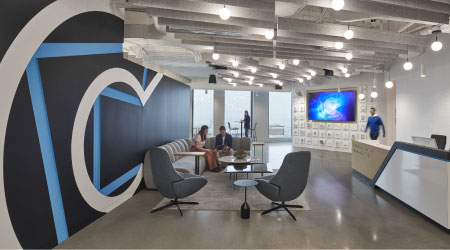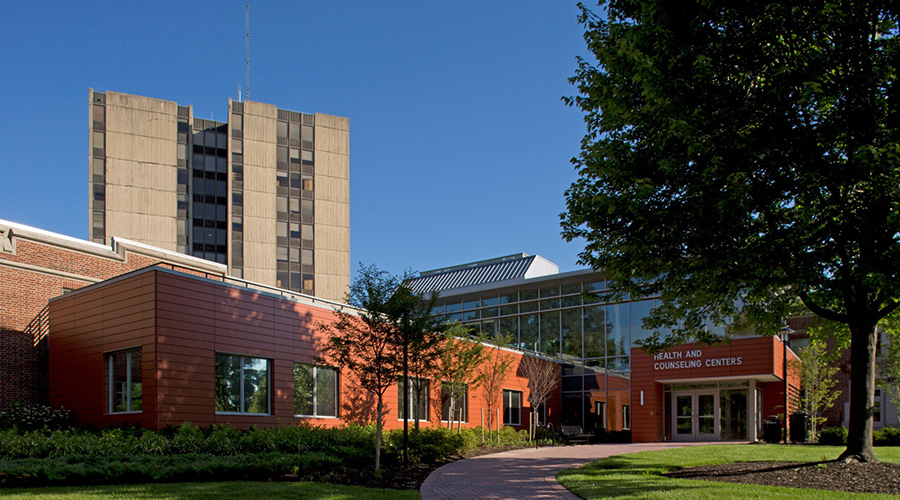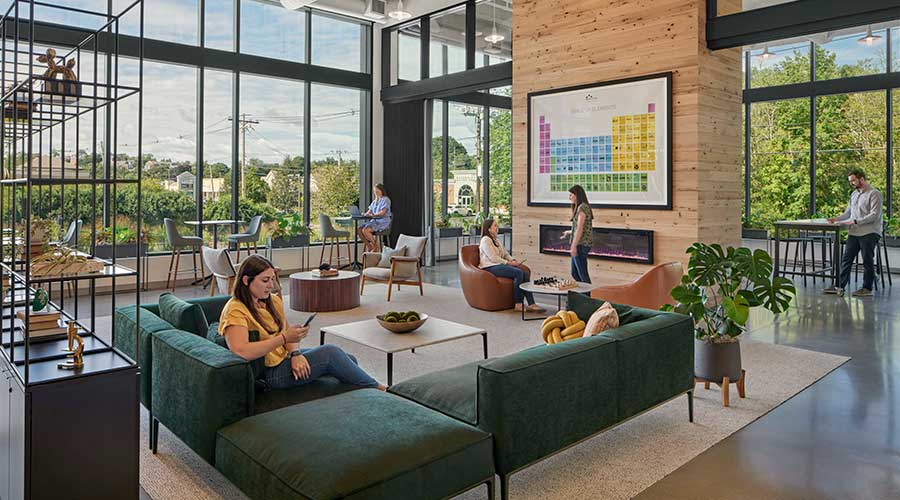Managing Transition to Open Workplaces and Drawing from ‘Toolkit’ of Acoustics Products
Part 2 of a 3-part article exploring the acoustical challenges in open workspaces
Another aspect of the acoustical challenges in open workplaces is the problems that can result when employees aren’t brought in early during a design transition to discuss matters of comfort, productivity levels, and interruption containment. Setting expectations and making sure changes are communicated clearly is key, Pollock says. Fortunately, a sizable toolkit for good acoustics products exists, including sound masking and soft materials in key areas.
“We can miss this opportunity if we’re not careful,” Pollock says about communicating a design change. “Early on we can explain that this transition in your company is happening, whether we’re going to build a new building, or go from private spaces to open spaces, or from high partitions to open spaces. Walking people through decisions and design elements that have been made for acoustics, and making that pitch early in the design, is important to give people comfort that it was the right decision.”
Although workers are often concerned that the noise level will increase exponentially when they transition from predominantly private offices to high-performance open spaces, the opposite tends to occur, says Daniel P. Perruzzi, Jr., a principal with Margulies Perruzzi Architects. When partition heights are lowered, people automatically change the way they speak, specifically their modulation, he says. So while workers might have been speaking louder with higher partitions, which make it difficult to share ideas from their workplaces, the lowering or lack of partitions leads them to speak more quietly and makes it easier to collaborate and be part of a larger group, Perruzzi says.
“You have to work with them on their expectations,” he says. “Many times when we transition people into high-performance workspaces, we tell them not to overreact to noise or sound issues.”
Toolkit for Good Acoustics
The good news is that there are many solutions for the numerous acoustical challenges in high-performance workspaces. One of those solutions is sound masking, which provides an elevated but comfortable level of specifically designed “background” sound that blurs the intelligibility of conversations and makes ambient sounds less distracting to people who are concentrating. “While sound masking is not the one and only solution for reducing distractions, it can significantly improve the ability of people to focus through limitation of distracting voice sounds in the office,” Pollock says.
Perruzzi says he often tells building owners not to tell anyone that sound masking is being installed, because if people know it’s there, they’ll listen for it and hear it no matter the conditions.
In addition to sound masking, another solution is to use soft materials in spaces such as the ceiling, low-level wall partitions, and the floor. If an office has an exposed ceiling, Perruzzi says, clouds with acoustic material to absorb sound can be hung, carpet can be used over wood floors, and fabric can be specified on wall screens. “This way, you can avoid echoes and absorb sound at the source,” he says.
HOK’s Herriott notes that the nature of monolithic ceilings means they reflect sound, so while he would tend to put a flat ceiling above a table to encourage sound where discussions are held, he would use more of an acoustical ceiling treatment on the perimeter to soak up that same sound so that it wouldn’t distract others in the office. In metal ceilings with perforations, different acoustical backings can be added and the density of the perforations can be changed, all with the goal of containing sound.
“You can do some very detailed tweaks to make it work,” Herriott says, adding that the trend in San Francisco, where he is based, is for offices that have open ceilings to be sprayed with sound-absorbing material.
Related Topics:














